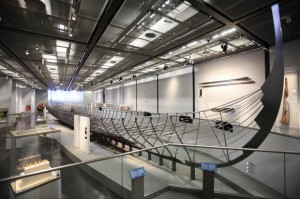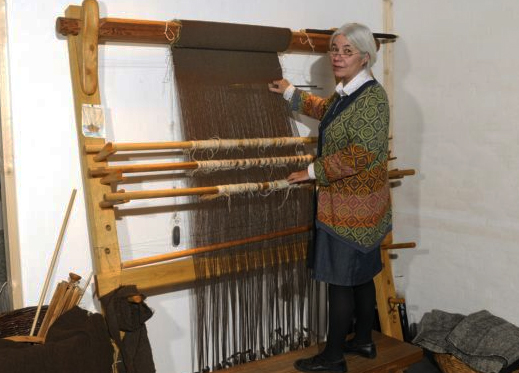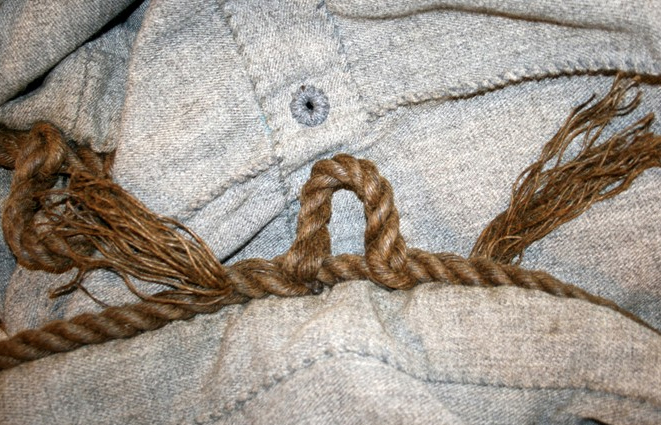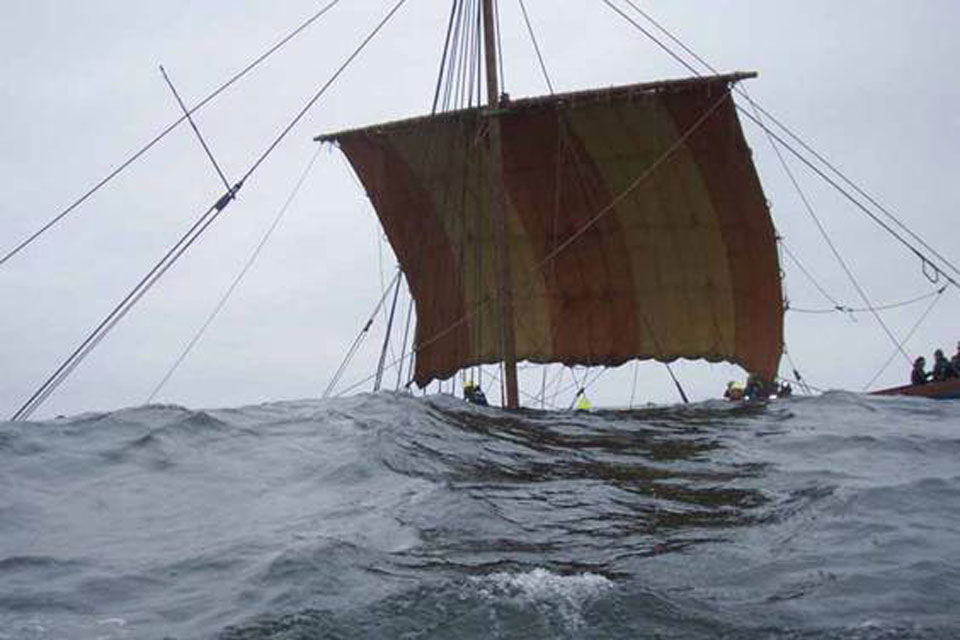Clothed in stainless steel, Roskilde 6 is a pitiful wreck yet still amazes. The question is what effort it took to set sail. New research tells the story

A ship has – as does a man – a proper name. Unfortunately, however, the name of ‘Roskilde 6’ was forever lost at the bottom of Roskilde Firth when it sank sometime in the 11th century to become part of a defensive barrier. Accordingly, until a valid copy is built, we have to be satisfied with the less than poetic epithet “Roskilde 6”.
The largest Viking ship ever found, it measures 37.27 metres with a beam (width) of 3.99 metres and a shallow draught calculated to be no more than 0.84 metres. It must have felt like not much more than a floating raft. Nevertheless, it has been estimated to be able to carry a hundred persons, of which 78 – 80 crewed the rowing stations. At the best of times, the ship could set a sail of app. 200 m2. Nevertheless, rowers were needed to navigate the ship through all sorts of weather. A true beast of a ship, it was imminently useful to carry large armies across the North Sea to take them to take part in the continued occupation of England in 1025.
According to the Encomium Emmae Regina and other sources, Cnut invaded England in 1015 with 200 ships. If all the ships were the size of Roskilde 6, it means he could muster an army of about 20.000 men. To this fleet should be added some of Aethelred the Unready’s allies, who we are told defected with 60 ships and more. In the end, it was enough to conquer England. The question here is, what investment was involved in mustering such an army?
Of course, this is a question which defies a precise answer. However, we do know something from the archaeological reconstructions which have been carried out in the last 100 years since the remarkable finds at Oseberg and Gokstad in Norway. Especially the reconstructions carried out at The Viking Ship Museum in Roskilde, which holds the most extensive collection of excavated Viking wrecks, have yielded valuable information.
The result of one such reconstruction is The Sea Stallion from Glendalough, which toured the mighty seas around England a few years back. The reconstruction was based on Skuldelev 2, app. 20% smaller than Roskilde 6.
This ship took about 0.08 years* pr. running meter to reconstruct (including time spent on smithing). To build a ship like Roskilde 6 might thus take approximately one man nearly three years (2.96 year).
However, added to this should be the production of the textiles needed to outfit the men and to produce the rectangular Viking sail. New and exciting calculations by Lise Bender Jørgensen tell that 84 years of work would be needed to outfit a ship the size of Roskilde 6 with clothes for 100 seafarers, their special rugs to keep out the cold and not least a sail (200 m2).
What does this mean? Well, to spell it out, the building of the ship was by far only a minor investment of manpower, 3.4 % of the total. Much more important was for each oarsman or warrior to have at least one dedicated (enslaved) woman in his household, working for nearly a whole year to outfit him and “his” boat with the necessary textiles (including his “part” of the sail), before he could set out.
Secondly, it might explain the widespread heaths that characterised the landscape of the Late-Iron age and Early Medieval Scandinavia. Enormous tracts of land were involved in feeding the sheep, which yielded the wool used for the equipment of the Viking raiders on their quests along the coast, down the rivers of wider Europe and across the Arctic Ocean.
To conclude: the conquest of England took the combined effort of 17.500 persons working for a whole year to outfit and organise Cnut’s war on England. With an estimated population of no more than 5-650.000 people in wider Denmark at this time, and with the possibility of a surplus of no more than 1/3** it may be estimated that these 17.500 people at least needed a backing group of more than 35.000. Around 10% of the population were thus directly involved in this venture.
Finally, it is no wonder the crew responsible for the reconstruction of The Sea Stallion, in the end, chose to outfit their ship with a modern sail made of cotton.
SOURCE:
The Introduction of sails to Scandinavia: Raw materials, labour and land.
By Lise Bender Jørgensen, Norwegian University of Science & Technology
In: N-TAG-TEN. Proceedings of the 10th Nordic TAG conference at Stiklestad, Norway 2009, Ed. by Ragnhild Berge, Marek E. Jasinski and Kalle Sognnes pp.173 – 184
Archaeopress 2012
READ MORE ABOUT RECONSTRUCTED SAILS

Et Uldsejl til Oselven [A woolen Sail for Oselven]
Recently, it was possible to admire a project in Roskilde at the Viking Museum, where the weaver, Anna Nørgaard, wove the cloth for a new sail for the reconstructed ship, Oselven.
A woolen Sail for Saga Oseberg
Another reconstruction has been carried through by a group of enthusiasts in Norway in connection with the building of a copy of the Oseberg Ship from AD 834. This sail of wool (90 m2) was made of traditional wool from the old Norse sheep by a group of to women plus a number of voluntaries. It cost around €1,3 million to make it. The sail is (as the ancient Gulating law required of the sails of the leiðangr – royal – fleet) kept safe during the winter in the church of Tønsberg, far South from where some of the oldest fragments of a medieval sail was found in in 1986 in the Church of Trondenes.
 Notes:
Notes:
* One working year = 1680 hours (modern calculation). It took 24 – 28.000 hours to build the Sea Stallion (In fact these 28.000 hours were spread over four years, but in general it is estimated that it would take a year to source and fell the trees, work the wood, build the ship and fit it with mast, oars and finishing. Some of the people working on the reconstruction of the ship were voluntaries, working in their spare time). Added to this has been the calculations presented in Jørgensen 2012
** It is estimated that on average a medieval Danish household had to set at least one third of a given harvest aside for next year, another third went into consumption, while the last third could be used for taxes, housebuilding, conspicuous consumption and other. Highly debatable, there were around 500-650.000 persons living in wider Denmark at the turn of the millennium.
SOURCE:
The Introduction of Sails to Scandinavia. Raw Materials, Labour and Land
By Lise Bender Jørgensen
IN: Barr International Series 2399, 2012
Rekonstruktion af et vikingeskib : Havhingsten fra Glendalough
By Marie Broen, Søren Nielsen, Morten Ravn
FEATURED PHOTO:
The Sea Stallion in High Water © Isarap
